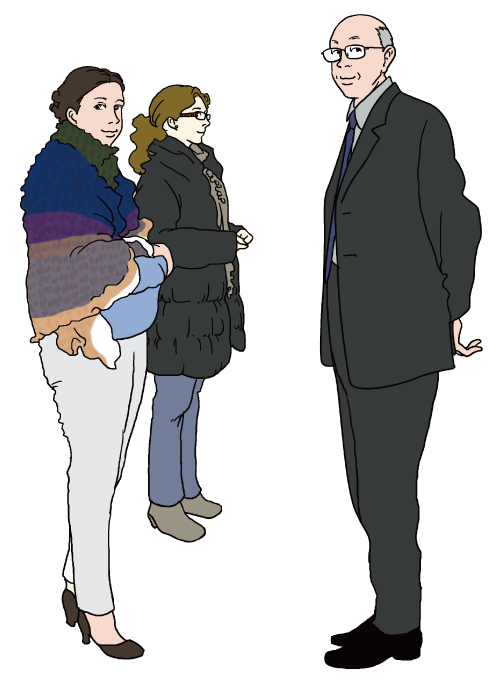新時代天体物理プロジェクト、始動。
絆が育む宇宙探求の最前線
この度、日本学術振興会が提供する「頭脳循環を加速する若手研究者戦略的海外派遣プログラム」の一事業として「ハーバード天文台を核とした米国研究機関との連携強化による新時代天体物理分野の開拓」をスタートすることになりました。この事業の資金援助を 得て、これから平成25年度末までの約2年間に、東北大学大学院理学研究科天文学専攻から4人の若手研究者を各自延べ1年以上、米国ハーバード天文台(ハーバード・スミソニアン天体物理センター(CfA)と宇宙望遠鏡科学研究所(STScI)に派遣します。この4人は、各自の関連研究分野の第一線で活躍する現地研究者と共同で、宇宙の誕生と進化の謎に挑みます。
発端は今から6年前に遡ります。私の長年の夢は、宇宙マイクロ波背景放射と呼ばれる宇宙 最古の光の観測により、宇宙開闢の様子を解明することです。宇宙の彼方からやってくる光は、 途中にある様々な天体が放つ光と混ざり合います。こうして、私達の元に届くころには、元々 微弱な宇宙マイクロ波背景放射に刻まれた宇宙開闢の手掛かりが、天体起源の雑音に埋もれて しまいます。中でも私達が暮らす天の川銀河系の中にある様々な物質が放つ光が、空を全天に 渡って覆い尽くし、私達が宇宙開闢時の様子を伝える微弱なシグナルを捉える事を阻んでいま す。その一つが銀河系内の星屑=スターダスト、別名宇宙塵、からの光です。宇宙塵の事は未 知のことが多く、厚いベールとして、宇宙開闢を探求する者の行く手を阻んでいます。そんな時、私は日本の赤外線観測衛星「あかり」の観測データを使えば宇宙塵の理解を大きく 進展出来る可能性があることを知りました。早速、東京大学の土井先生が立ち上げたば かりの「あかり」データを用いた遠赤外線宇宙地図作成チームに加わりました。それが6年前のことです。このチームのメンバーの一人に当時英国の大学院生だったスペイン 人女性研究者 Etxaluze 博士がいました。翌年の夏に米国で行われた国際会議で CfA の Finkbeiner 先生と出会いました。彼は、今から約30年前に米国が打ち上げた赤外線観 測衛星のデータを元に、世界で初めて宇宙塵の全天分布地図を作った研究者です。彼とは、「あかり」遠赤外線地図が完成したら宇宙塵全天分布地図の更新作業を一緒にやろうという話しになりました。
昨年3月11日の東日本大震災時、Etxaluze博士が博士研究員としてCfAで研究をしていました。震災直後、彼女は自分のボスのSmith先生に何か支援ができないか申し出ました。これを切っ掛けにCfAと私達との研究交流の絆が一気に深まりました。蓋を開けてみると沢山の種があることが分かりました。この事業では、その中から若手派遣研究者をたてられる4つの種を取り上げ、その成長を後押しします。それらは、個別に種 を育てる準備が既に進められていたもの、一緒に協力して育てるチャンスの到来を伺っていたもの、連携すれば双方がより豊かな収穫が得られることに始めて気がついたもの、の3つに分類されます。米国からは CfAと宇宙望遠鏡科学研究所のグループがこの事業に参画します。震災が切っ掛けになりましたが、今から思うと今回の日本側と米国側の交流事業の開始は宇宙探求の新時代を切り開くためにも必然だったように思えます。
震災が起き、研究活動が如何に多くの方々に支えられて成り立っているかに気がつきました。研究ができる有り難さを忘れずに、頭脳循環を始め普段の研究・教育活動の推進に全力を尽くしたいと思います。若手研究者の皆さんは、失敗を恐れず自分のやりたい研究に思う存分没頭して下さい。それが何時か天体物理学の新時代を切り開く大きな果実を結ぶことになることを信じています。
東北大学大学院理学研究科天文学専攻 准教授 主担当研究者 服部 誠


右から順に Howard Smith 氏 (CfA)、Mireya Etxaluze 氏 (スペイン国立宇宙航空技術研究所宇宙生物学センター, INTA)、Lauranne Lanz 氏 (CfA)。
Harvard-Smithsonian Center for Astrophysics (CfA) Participation in the Tohoku Brain Circulation Program.
This is an amazing time for research astronomy. Scientists today are probing very basic questions about our cosmic origins, including how the first stars and galaxies began. We know that after the Big Bang, matter in the early universe condensed into structures forming a giant web of filaments. Within these structures the first galaxies developed. But exactly how did the these galaxies form, and how did they evolve-through collisions, star formation, and other processes? We know that a few billion years after the Big Bang these young galaxies began makingstars at a rate perhaps ten times faster than today. Perhaps ourown Milky Way went through such a phase itself. The mechanisms at workremain mysterious. Star formation itself has many unanswered questions, including understanding how many new stars are massive - and so end their lives as supernovas - and how many are smaller stars like our Sun or even smaller. The process of forming new stars probably also produces planets around them. Finally, all of the chemical elements of the universe - except for hydrogen and some helium that were made in the Big Bang itself - were produced by nuclear fusion later on in stars. Hence star formation is a key to everything that happens in the cosmos.
The Brain Circulation program between CfA and U. Tohoku involves researchers and students working on all these important topics. At the CfA, six senior scientists and their students are working with U. Tohoku scientists on understanding the very early days of the universe, the nature of galaxies in the young cosmos, and how stars form today and how they formed back then. The goal of these various research projects is to understand better the universe in which we live, and why it has the properties that we see.
The Brain Circulation program has two other important components. First are projects to develop new technologies to probe these faint, distant regions with sensitive infrared and submillimeter detectors and other instruments. Science always makes major advances with the use of improved technology, and it is expected that these projects will ultimately contribute to advances in our understanding. The second component is education. We hope to train some new graduate students with these research programs, and help them become creative, independent astronomers. We also hope to explain to younger students in school, to students in other areas of study, and to the general public at large what it is that we are doing, and why it is so important.
ハーバード・スミソニアン天体物理センター(Harvard-Smithsonian Center for Astrophysics (CfA))教授 派遣受入先 Howard Smith


